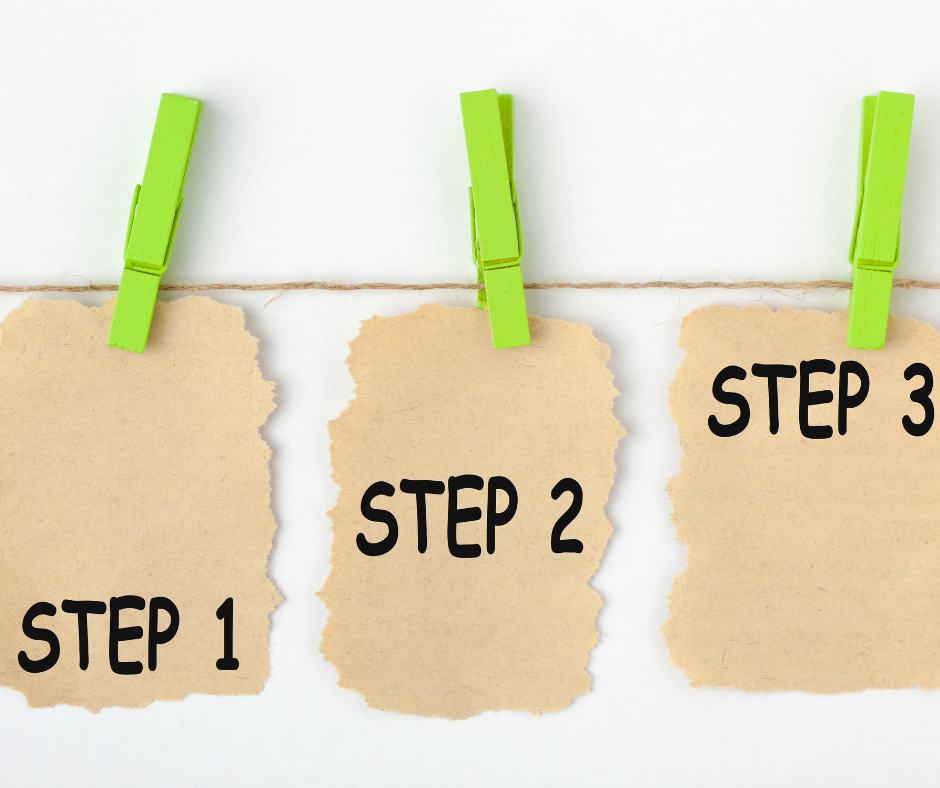
Imagine the impact on your organization if communication, collaboration, and risk management were optimized, and every employee knew exactly what to do and when to do it. A well-crafted manual procedures manual can make that vision a reality. In this blog post, we’ll guide you through the essential components, the creation process, and the best practices for maintaining an effective manual procedures manual that ensures your organization operates smoothly and professionally.
Key Takeaways
- Manual procedures are essential for improving communication, compliance and risk management.
- A manual should include company policies, guidelines and SOPs as well as employee roles & responsibilities.
- Regular reviews, feedback from employees and leveraging technology are key to maintaining an effective manual procedure system.
Understanding the Importance of Manual Procedures
Manual procedures play a critical role in enhancing communication, ensuring compliance, and managing risk within an organization, supporting its basic business operations. When employees have access to detailed procedures, they can execute tasks with precision and accuracy, boosting overall productivity.
These goals are achievable with an effective procedure manual and well-organized procedures manuals.

Enhancing Communication and Collaboration
Effective manual procedures can facilitate communication and collaboration between departments and employees, optimizing decision-making and problem-solving. A well-structured procedure manual, with its clear instructions and guidelines, ensures everyone understands the same message, reducing potential miscommunications.
Moreover, it serves as a valuable communication tool and a reference point for information, minimizing the need for ongoing communication, especially for new employees.
Ensuring Compliance and Risk Management
Manual procedures help organizations comply with industry standards, regulations, and manage risk by providing clear guidelines and protocols. A policy and procedure manual can streamline the onboarding process by reducing the effort and time required to train employees. Additionally, having well-organized policy and procedure manuals can further enhance the efficiency of the organization.
Regularly reviewing and updating the manual can assist the company in adhering to compliance requirements stipulated by the government and maintaining up-to-date regulatory documents. Inclusion of manual procedures in training programs allows organizations to familiarize their employees with these processes, thus decreasing the likelihood of accidents or undesirable incidents.
Manual of Operations Template
A “manual of operations template” serves as a structured framework for documenting essential processes and procedures within an organization or specific project. This template outlines the guidelines and steps necessary to ensure smooth operations and effective management. By utilizing a manual of operations template, organizations can standardize their operational workflows, clearly define roles and responsibilities, and establish protocols for handling various scenarios. It provides a comprehensive guide that aids in onboarding new employees, streamlining training, and maintaining consistency across different operational aspects. Customizing this template to fit the unique needs of a particular organization enhances efficiency, fosters a culture of compliance, and facilitates continuous improvement in operations.
Key Elements of a Manual Procedures Manual

A comprehensive manual procedures manual consists of three essential components: company policies and guidelines, standard operating procedures, and employee roles and responsibilities.
A clear and consistent formatting is crucial for easy navigation and understanding. Incorporation of these key elements makes your manual an invaluable tool for employees, promoting uniformity and professionalism across your organization.
Company Policies and Guidelines
Company policies and guidelines establish a framework for employees to follow, guaranteeing uniformity and professionalism. These policies cover various aspects, such as:
- Code of conduct
- Attendance and punctuality
- Confidentiality and data security
- Workplace safety
In addition to adhering to company policies, employees must also comply with federal or state laws.
Ensuring employees are informed about these policies and guidelines helps in fostering trust and accountability, constructing a productive corporate culture, and guaranteeing compliance. A comprehensive guide of the company’s policies can educate employees and clarify expectations, ultimately contributing to a more efficient and harmonious work environment.
Standard Operating Procedures
Standard operating procedures (SOPs) outline the step-by-step processes for completing tasks, ensuring efficiency and quality. These procedures can help to maintain consistency and predictability in outcomes, which in turn reduces the risk of errors or variations in performance.
SOPs provide a framework for employees to follow, ensuring they have clear instructions and guidelines to execute their tasks effectively. By promoting consistency and providing clear instructions, SOPs contribute to sustaining high-quality standards in business operations.
Employee Roles and Responsibilities

Defining employee roles and responsibilities is crucial in helping employees understand their duties and expectations within the organization. A well-crafted manual procedures manual should include:
- Unambiguous job descriptions
- Performance requirements
- Reporting structure
- Communication protocols
- Training and development
- Compliance requirements
- Career advancement opportunities
With a clear understanding of their roles and responsibilities, employees can concentrate on their tasks, thereby efficiently contributing to the organization’s basic business operations and overall goals.
Steps to Create a Comprehensive Manual Procedures Manual

Creating a comprehensive manual procedures manual may seem like a daunting task, but with the right approach, it becomes a manageable and rewarding process. The main steps involved in creating a manual procedures manual are:
- Conducting research and gathering information
- Prioritizing and organizing content
- Writing clear and concise procedures
Following these steps will help you create procedure manuals that can function as a valuable reference for your organization and its workforce.
Conducting Research and Gathering Information
The first step in creating a manual procedures manual is to conduct research and gather information from various departments to ensure the manual covers all relevant topics and processes. This involves:
- Identifying the users
- Focusing on the problem
- Utilizing sequential steps in order
- Mapping the user journey.
Research and data collection from credible sources will enable you to compile a guide that encompasses all essential tasks and procedures within the organization.
Prioritizing and Organizing Content
Once you have gathered the necessary information, the next step is to prioritize and organize the content logically. Start by categorizing the content into subcategories and using a table of contents for easy navigation.
Organizing content logically ensures that the manual is comprehensive and easy to understand, enabling users to quickly find the information they need and comprehend the general scope of the manual. Adopting clear and consistent formatting will yield a user-friendly manual that efficiently imparts your organization’s policies and procedures.
Writing Clear and Concise Procedures
The final step in creating a manual procedures manual is to write clear and concise procedures, using simple language and step-by-step instructions. Visuals, such as diagrams, flowcharts, and illustrations, can be utilized to supplement the written instructions and make them more accessible and engaging for the readers.
Crafting explicit and succinct procedures contribute to a comprehensible and easily followed manual, thus decreasing errors and increasing productivity.
Tips for Maintaining and Updating Your Manual Procedures Manual

Once you have created your manual procedures manual, it is essential to maintain and update it periodically to ensure it remains relevant and beneficial. This involves conducting regular reviews, utilizing employee feedback, and leveraging technology for easy access and updates.
Adherence to these best practices will ensure your manual procedures manual remains a valuable asset for your organization and its employees.
Regular Reviews and Revisions
Regular reviews and revisions are crucial to keeping your manual up-to-date and relevant, reflecting any changes in company policies or industry regulations. It is typically advised to conduct reviews and revisions every one to three years, or more frequently if there are significant changes or new business requirements.
Conducting regular reviews and making necessary amendments ensures your manual stays current and reliable for your employees.
Utilizing Feedback from Employees
Employee feedback is an invaluable resource for maintaining and improving your manual procedures manual. Soliciting feedback and integrating suggestions will help identify areas for improvement, maintain user-friendliness, and continually enhance the manual’s effectiveness.
Feedback from employees can help you recognize mistakes, augment clarity, and address specific objectives and requirements, ultimately leading to improved employee satisfaction and performance.
Leveraging Technology for Easy Access and Updates
Technology plays a significant role in maintaining and updating your manual procedures manual. By utilizing cloud-based systems or specialized knowledge management software, you can make the manual easily accessible and facilitate updates. Examples of software utilized for managing manual procedures include:
- KnowledgeBase
- ProProfs
- Helpjuice
- Document360
- Scribe
Utilizing a document management system can facilitate the updating and accessing process of your manual procedures manual, enhancing its efficiency and user-friendliness.
Implementing and Training Employees on Manual Procedures

Implementing and training employees on manual procedures is crucial for ensuring that they understand and follow the policies and procedures outlined in the manual. This process involves introducing the manual procedures to employees, creating a training program, and monitoring employee performance.
Efficient implementation and training of employees will equip them to perform their tasks in alignment with the organization’s policies and procedures, ultimately enhancing employee productivity.
Introducing the Manual Procedures to Employees
The first step in implementing and training employees on manual procedures is to introduce the manual to your employees. This involves explaining the purpose and importance of the manual within the organization. A manual procedures presentation during employee orientation can help alleviate anxiety, clarify company policies and procedures, and accelerate the onboarding process.
Once employees have a clear understanding of the manual’s purpose and significance, they can concentrate on their tasks, thereby effectively contributing to the organization’s goals.
Example of Manual
An example of a manual can be found in the comprehensive user guide provided with the latest smartphone model by TechX. This example of a manual serves as an indispensable tool for users, offering step-by-step instructions on setting up the device, navigating its features, and troubleshooting common issues. In this example of a manual, users can learn how to optimize their device’s settings, install applications, and ensure security measures are in place. Additionally, this manual example includes illustrations and diagrams, further aiding users in understanding the device’s functionalities and enhancing their overall user experience. Overall, this example of a manual exemplifies the importance of clear and detailed instructions to maximize the utility and functionality of a product.
Creating a Training Program
After introducing the manual procedures to employees, the next step is to create a training program to educate them on how to use the manual and where to find relevant policies and procedures.
This training program should include:
- A welcome screen/introduction
- Instructions
- Objectives
- Module content
- Assessment (quizzes)/survey
- Summary + follow-up
Creating a comprehensive training program will ensure your employees are adept at navigating and utilizing the manual procedures for their benefit.
Monitoring and Evaluating Employee Performance
Monitoring and evaluating employee performance in relation to manual procedures is essential to ensure they are following the guidelines and identify any areas for improvement or additional training. Effective methods for monitoring employee performance include:
- Direct observation
- Performance reviews
- Monitoring software
- Check-ins and feedback
- Time tracking
Regular assessment of employee performance will ensure adherence to the manual procedures and effective contribution to the organization’s success.
Templates for Training Manuals
Templates for training manuals serve as essential guides for creating structured and effective training materials. These templates are meticulously designed to streamline the process of organizing content, ensuring that the training manual is cohesive and easy to follow. By utilizing predefined layouts, formatting, and sections, these templates provide a standardized framework that enhances the overall clarity and accessibility of the training material. The use of templates helps maintain consistency in style, branding, and presentation, offering a professional and uniform look across various training modules. Moreover, incorporating these templates accelerates the development of training manuals, saving valuable time and effort for instructional designers and content creators. Overall, templates for training manuals play a crucial role in delivering well-structured, comprehensive training resources to support effective learning and development within an organization.
Summary
In conclusion, creating an effective manual procedures manual is essential for enhancing communication, ensuring compliance, and managing risk within an organization. By understanding the key elements, following a structured process, maintaining and updating the manual, and implementing a comprehensive training program, you can create a valuable resource that ensures consistency, professionalism, and success in your organization. So, take the first step today and embark on the journey of creating a manual procedures manual that empowers your employees and drives your organization forward.
Frequently Asked Questions
What goes into a procedure manual?
A procedure manual typically includes elements such as organization culture, employment policies, training manuals, employee benefits, payment procedures, travel itineraries, workplace guidelines, harassment and discrimination guidelines, and a code of conduct.
What is a procedure manual in medical terms?
A clinical procedures manual is a collection of documented procedures outlining the proper medical use and care of patients. It serves as a guide for healthcare professionals to ensure quality patient care.
What makes a good procedure manual?
A good procedure manual should include clear step-by-step instructions, valid assumptions, consistent formatting and details such as best practices, company expectations, HR policies, working policies and technology guidance. Lists and bullet points are also useful for helping to explain procedures.
What is the difference between a manual and a procedure?
A manual provides an overview of company policies, benefits, rights and responsibilities, while a procedure outlines specific steps on how to do certain tasks.
How can I ensure my manual procedures manual remains up-to-date and relevant?
To ensure your manual procedures remain up-to-date and relevant, review and revise regularly, incorporate employee feedback, and use technology to facilitate easy access and updates.